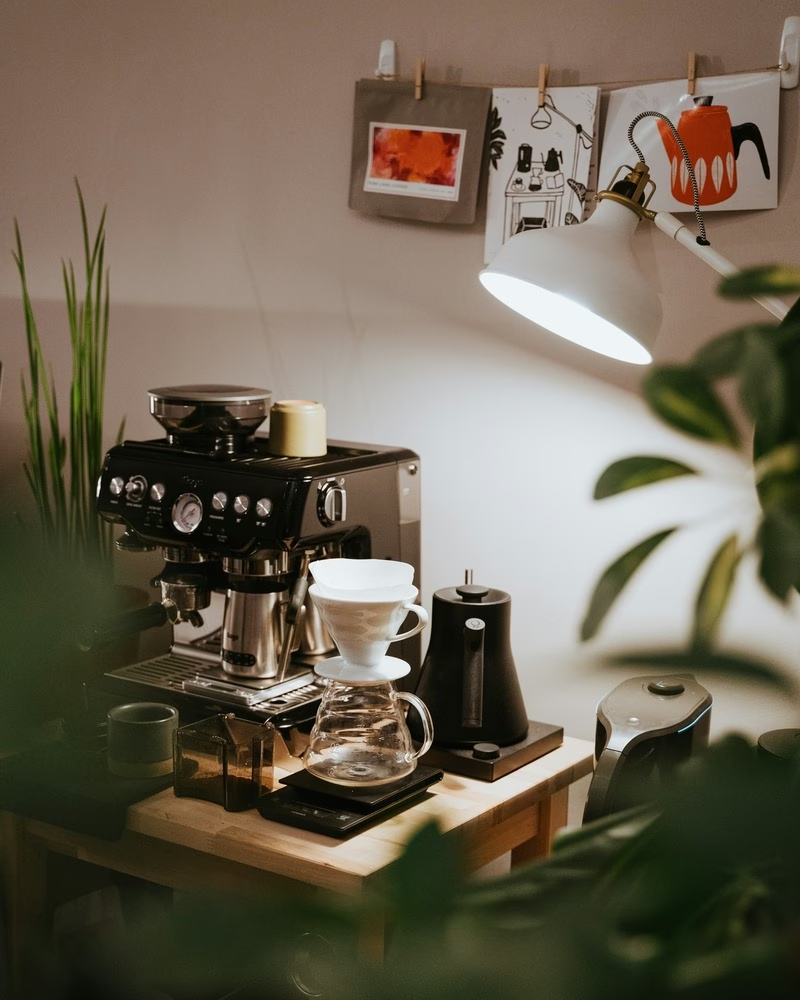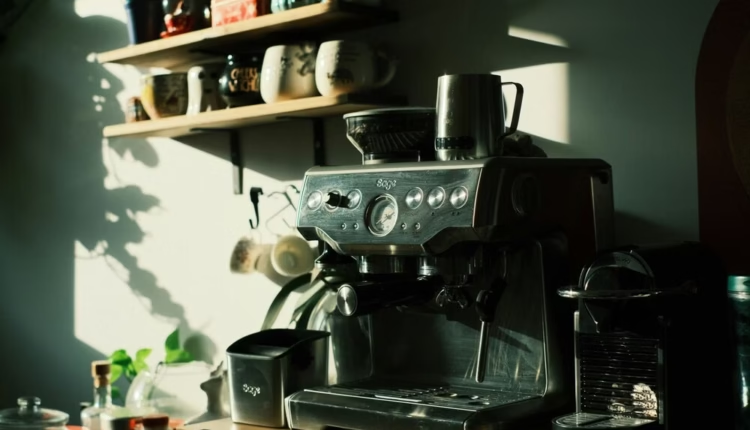With More Consumers Brewing Coffee at Home, What's Next for Cafés?

With a growing number of coffee drinkers opting to brew their coffee themselves, cafés are changing with the times.
BY EMILY JOY MENESES
ONLINE EDITOR
Featured photo by Jakub Zerdzicki
Alongside the COVID-19 pandemic came the rise of the “home barista.” With lockdowns around the globe shutting down public spaces throughout 2020 and much of 2021, more consumers began opting to make their favorite beverages at home—a trend that, since then, never really went away.
The cult of home-brewing is reflected in tons of new equipment and products on the market: beginner-friendly espresso machines, space-saving milk frothers, cold brew makers, and single-serve pourover sachets, for example, have been all the rage. In addition, things like flavored syrups, ceremonial-grade matcha, and barista-quality milk are no longer exclusive to coffee establishments: More than ever before, people want to have these things readily available at home.
But what has this shift in customer behavior meant for coffee shops? With more people making their daily brews themselves, is coffee business bound to take a hit—or is there a way for café owners to change with the times?


Bringing Quality Home
In the past year, there’s been a strong emphasis on bringing quality coffee home—take, for example, James Hoffman’s recent collaboration with Cometeer for instant espresso, or Fellow’s release of the Aiden Precision Coffee Maker, a home batch brewer that gives users advanced control over temperature, bloom times, and brew phases.
To put it simply, people want to make café-quality coffee at home—and they’re willing to invest in the equipment needed to do so.
Former United States Barista Champion Phuong Van, who runs Ridgefield, Wash.-based café Lava Java, shares that, this past April, she began selling Breville home espresso machines alongside her typical coffee shop offerings. She says that the move has aided, rather than taken away from, the rest of her operations. “I decided to sell home machines because my customers have been asking me about home machine recommendations for years now,” she told Barista Magazine. “My customers love it.”



The Changing Role of the Café
While she’s encouraging of customers who want to brew coffee at home, Phuong explains that her shop has transformed into a sort of informational space—with baristas ready to help customers with any coffee-related questions they may have.
“(Customers) feel comfortable asking us about the equipment, because there’s an existing trust established. We offer hands-on demos and answer all of their questions and concerns,” she says. “When they purchase a machine from us, they’re already set up for success when they unbox their new machine at home. It’s definitely helped my business.”
Business for Lava Java has stayed consistent, with many customers who previously bought an espresso machine from Phuong stopping in weekly to purchase coffee beans. “They also (still) come in to buy drinks from us, because they just don’t want to make coffee at home everyday,” Phuong adds. “They refer their friends and families as well. Altogether, it’s been a huge win-win for all.”
Meeting Customers Where They Are
While the rise of home-brewing has certainly shifted the specialty-coffee landscape, it doesn’t necessarily spell trouble for cafés. Instead, it offers an opportunity for coffee shop owners to adapt. As consumers seek the perfect brew at home, coffee shops that meet them where they are can continue to thrive.
Subscribe and More!
As always, you can read Barista Magazine in paper by subscribing or ordering an issue.
Read the October + November 2025 Issue for free with our digital edition.
For free access to more than five years’ worth of issues, visit our digital edition archives here.
Source: Barista Magazine



